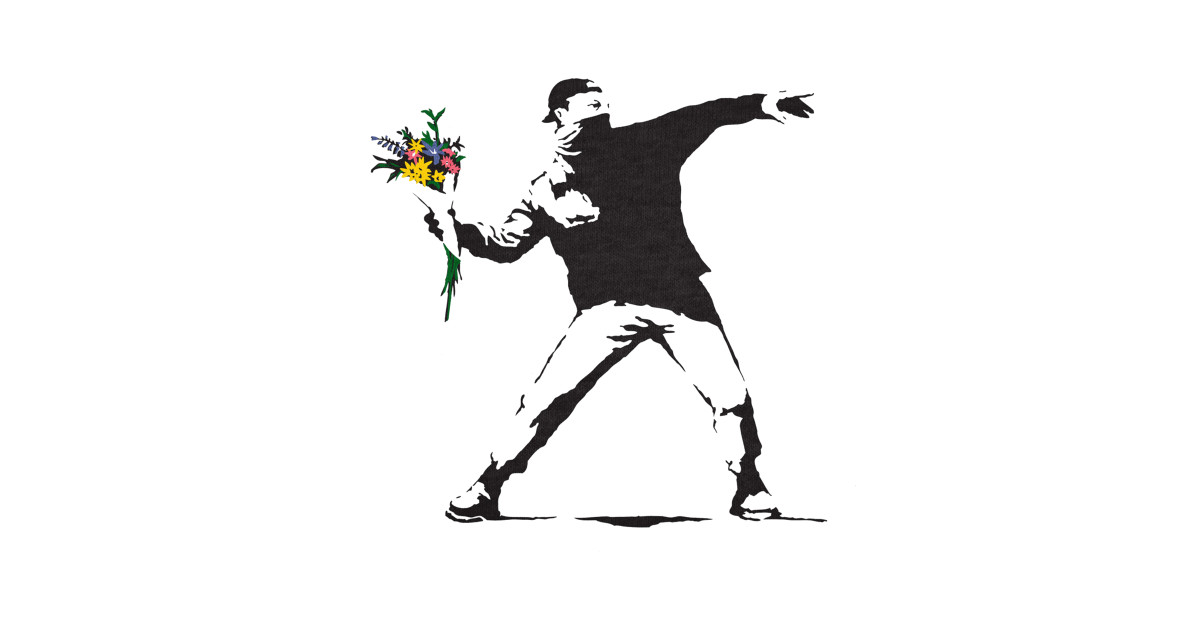In a world where headlines are invariably saturated with reports of not only the causes but also the catastrophic repercussions of protests, one is forced to questions the means in which these pleas for change are performed - topically we can observe this as the social and economic turmoil unravels in places such as Hong Kong and Venezuela. However, at times of seemingly inextricable discontent and anguish, a certain form seems capable to deliver messages in an amicable manner with the same gravitas: graffiti.



 On a rather separate note, graffiti is able to ascertain such attention because of its appeal as a work of art, whether it be the ingenuity of the actual art, the message, or the intersection of the two. Banksy, amongst other notable artists, is someone who can make use of the latter. By cleverly playing with the protagonists or main themes in a piece, street artists are able to increase its ‘shareability’ or in other words the number or views. This in itself is a measure of how impactful a protest is and brings the blog back to the title.
On a rather separate note, graffiti is able to ascertain such attention because of its appeal as a work of art, whether it be the ingenuity of the actual art, the message, or the intersection of the two. Banksy, amongst other notable artists, is someone who can make use of the latter. By cleverly playing with the protagonists or main themes in a piece, street artists are able to increase its ‘shareability’ or in other words the number or views. This in itself is a measure of how impactful a protest is and brings the blog back to the title.
Graffiti has the ability to reach a large audience. Although certainly not without its critics, this form of art has the power to give people, often with limited opportunities, a global platform to express themselves. Impactful, appealing and importantly peaceful, street art can deliver in ways that other protests cannot compare. Whether its lighting up the frequently dark streets of Rio or intriguing international viewers at art exhibitions in London, there is no question that graffiti will play a significant part in the protests of the future.
Works Cited:
Rashed, Waleed. “Egypt's Murals Are More Than Just Art, They Are a Form of Revolution.” Smithsonian.com, Smithsonian Institution, 1 May 2013, https://www.smithsonianmag.com/arts-culture/egypts-murals-are-more-than-just-art-they-are-a-form-of-revolution-36377865/.
Polinovsky, Ilona. “The Power of Banksy Street Art.” Urban Gateways, 21 Jan. 2016, https://urbangateways.org/the-power-of-banksy-street-art/.
Bullen, Pauline, et al. “Graffiti and Street Art Can Be Controversial, but Can Also Be a Medium for Voices of Social Change, Protest, or Expressions of Community Desire. What, How, and Where Are Examples of Graffiti as a Positive Force in Communities?” The Nature of Cities, 11 Sept. 2019, https://www.thenatureofcities.com/2016/03/23/graffiti-and-street-art-can-be-controversial-but-can-also-be-a-medium-for-voices-of-social-change-protest-or-expressions-of-community-desire-what-how-and-where-are-examples-of-graffiti-as-a-posi/.
Works Cited:
Rashed, Waleed. “Egypt's Murals Are More Than Just Art, They Are a Form of Revolution.” Smithsonian.com, Smithsonian Institution, 1 May 2013, https://www.smithsonianmag.com/arts-culture/egypts-murals-are-more-than-just-art-they-are-a-form-of-revolution-36377865/.
Polinovsky, Ilona. “The Power of Banksy Street Art.” Urban Gateways, 21 Jan. 2016, https://urbangateways.org/the-power-of-banksy-street-art/.
Bullen, Pauline, et al. “Graffiti and Street Art Can Be Controversial, but Can Also Be a Medium for Voices of Social Change, Protest, or Expressions of Community Desire. What, How, and Where Are Examples of Graffiti as a Positive Force in Communities?” The Nature of Cities, 11 Sept. 2019, https://www.thenatureofcities.com/2016/03/23/graffiti-and-street-art-can-be-controversial-but-can-also-be-a-medium-for-voices-of-social-change-protest-or-expressions-of-community-desire-what-how-and-where-are-examples-of-graffiti-as-a-posi/.
No comments:
Post a Comment